Biography
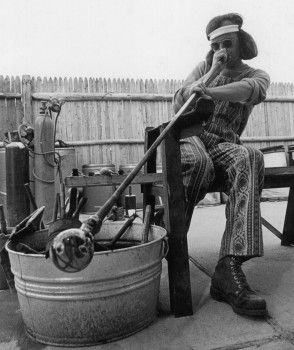
![]()
|
After working as a professional advertising illustrator for five years (1962 through 1968), Richard was hired to teach advertising at the Society of Arts and Crafts. Taking advantage of the school's policy that allowed instructors to enroll in classes, Richard pursued an interest in metalworking. His first exposure to hot glass took place in 1968 when Gil Johnson built a small glass blowing facility at CCS. Richard was interested in incorporating glass into the pewter castings he was working on at the time, and signed up for the glass blowing class. After working at the furnace only 11 times during the semester, Richard was convinced that glassblowing was the media that he had been searching for to begin his life's work.
In 1977, Richard married Jan Williams, and they moved to a farm in Cass City, Michigan where Richard built a studio and they had their first child, Richie. In 1979 Richard received the honor of being invited by Mrs. Walter Mondale to create a set of dessert plates to become a part of the Permanent Collection of the Vice President's Resident in Washington, D.C. At that time Richard was blowing mainly vessel forms and paperweights. In order to produce the 16 "Mondale Plates" to make up the set for the collection, Richard blew many small plates. As a result he began to experiment using murrini, layered cane and lattacino incorporated into large platter forms. Soon, Richard was employing multiple layers of crystal and opal glasses to construct complex worlds within a glass matrix.
In 1990, Richard was honored with a Twenty-year Retrospective at the University of Michigan at Dearborn. He continued his long association with Penland School through teaching and as a member of the Board of Directors. 1993 was declared "The Year of the American Craft: A Celebration of the Creative Works of the Hand" as mandated by a Presidential Proclamation and Joint Resolution of Congress. Richard was one of 70 of America's leading crafts artists invited to contribute an example of their work to the first permanent White House Crafts Collection. By the mid 1990's, Richard had gone away from the solid glass sculptures, and was now producing a series of "Grail" pieces. These consisted of a complex blown platter form with an attached faceted solid base. He also returned to experimentation with etched and copper electroformed surfaces on the surface of many of his pieces. Richard continued to work, teach, and exhibit. His glass appeared on the August/September 1996 cover of American Craft Magazine and was featured in its article by Joan Falconer Byrd: 'Richard Ritter, Thinking in the Language of Glass.�
In 1999, Richard was honored with a thirty-year retrospective of his glass at Christian Brothers University in Memphis, Tennessee. He received an Honorary Doctor of Fine Arts from the Center for Creative Studies in Detroit Michigan in 2000. He also received the North Carolina Artist Fellowship Grant 2000-2001, and was honored with a thirty-year retrospective exhibition at the University of Michigan, Dearborn: "Suspended Expressions, Visions in Glass." In 2002, a back fracture forced Richard to shut down his hot shop for six months. His injury prevented him from lifting heavy objects, so he began to work in earnest on designs and detailed molds for a new series of work. Friends and artists from around the area came together to help Richard get his shop running again and he was able to bring the designs and molds to reality in the Floral Core Series. Richard would produce 136 pieces in this series over the next 7 years. In 2009, Richard celebrated 40 years of working in glass with a retrospective exhibition at the Toe River Arts Council in Spruce Pine, North Carolina. This exhibition featured over 75 works in glass from 1969 to 2009. This show continues to travel, and has been exhibited at locations such as Western Carolina University, the Green Hill Center for NC Art, and the Ogden Museum of Southern Art. In 2011, Richard was declared a North Carolina Living Treasure. He recieved a Medallion in a ceremony at the University of North Carolina Wilmington and was honored with the exhibition Murrinis Within a Crystal Matrix: The Poetic Glassworks of Richard Ritter. This exhibition of his work was shown at the Cameron Art Museum. |
• Main • Biography • Image Gallery •
• Current Events • External Links • Email Us •
| Add or Remove Navigation Menu |
All Images Copyright Ritter Glass Inc.
|
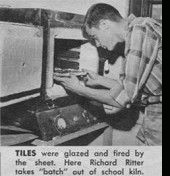
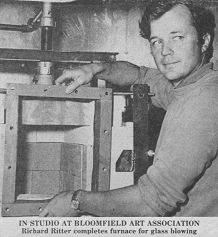
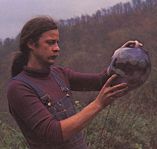 In 1972,
In 1972,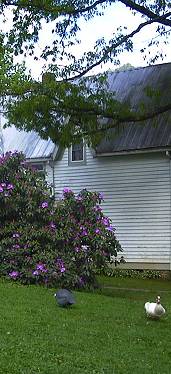 In 1980,
In 1980,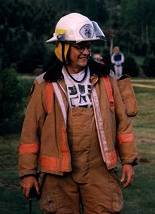 In 1997,
In 1997,